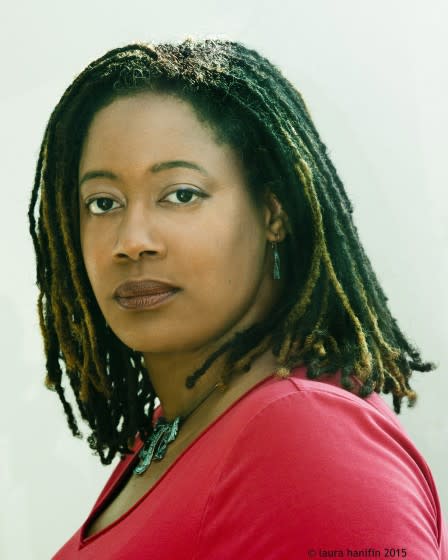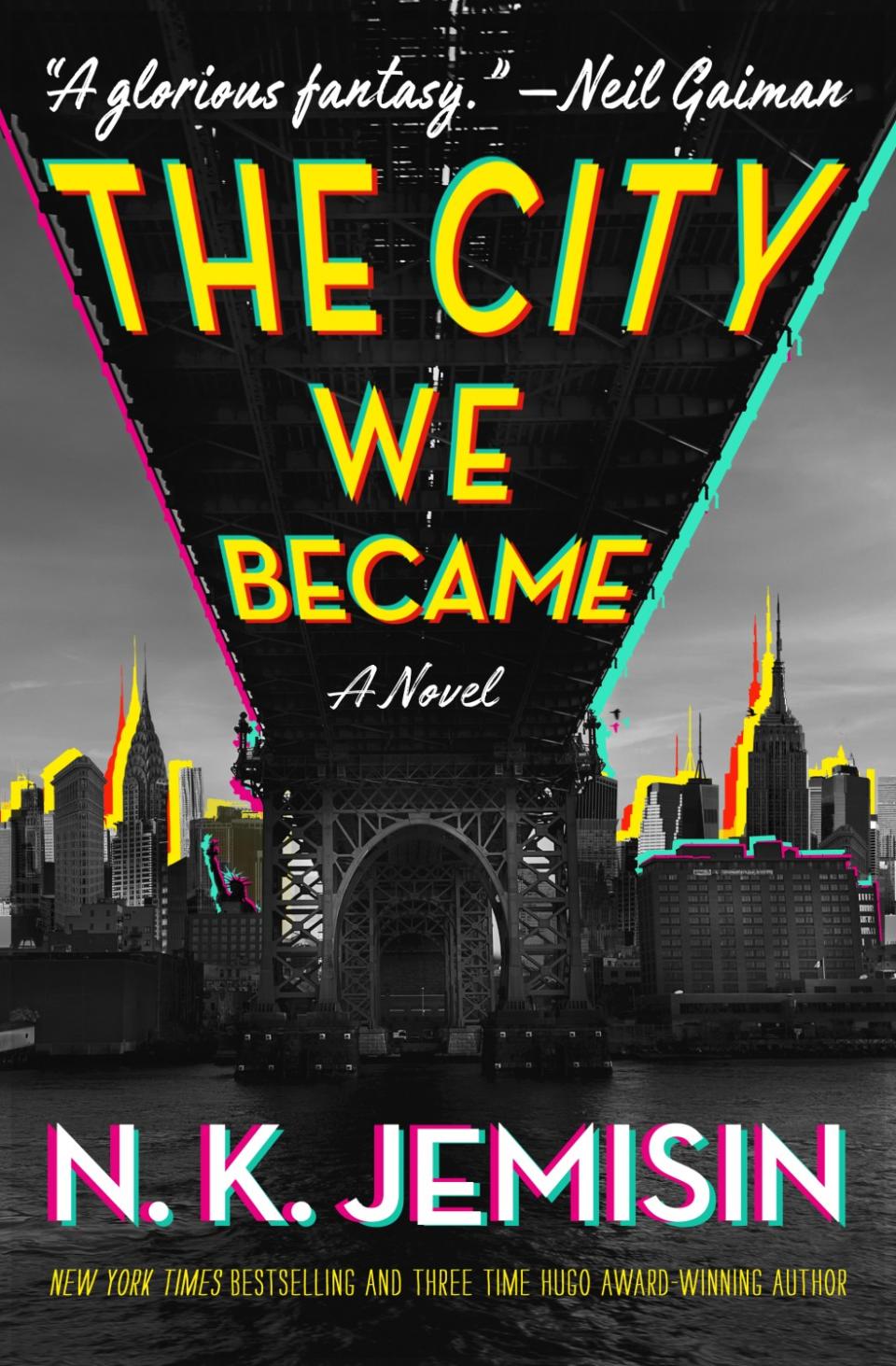Review: N.K. Jemisin makes cities (literally) live and breathe

N.K. Jemisin’s “The City We Became” is a novel concerned with the pleasures and violences of urban life, so it makes sense that reading it feels a little like riding the subway for the first time. You barely have a moment to steady yourself — grab a seat, or at least a pole — before the world is lurching forward, dragging you into inky darkness, pulling you around corners at breathless speed.
Jemisin is a veteran writer and a decorated one: Her previous books, including the Inheritance trilogy, the Broken Earth series and the story collection “How Long ‘til Black Future Month?,” have won a Nebula Award, two Locuses and a record-setting three Hugos. Jemisin brings all of her considerable skill and talent to bear on “The City We Became,” which is epic in ambition and scope: This first novel in a series is a multicultural twist on — and sharp riposte to — Lovecraftian speculative fiction. (H.P. Lovecraft was a genre-defining writer and an unapologetic racist: His story “The Horror at Red Hook” made the diverse immigrant neighborhood the literal gateway to hell.)
“The City We Became” imagines a handful of the world’s great cities — Hong Kong, Sao Paulo and London among them — as not just vital but actually alive, and engaged in a struggle with hostile forces that threaten their very existence.
“Great cities are like any other living things,” Jemisin writes, “being born and maturing and wearying and dying in their turn.” At some point in that process of maturation, some cities transform and cohere — from a collection of buildings and people into something more like an organism. Then, like any animal, they gestate until they are ready to be born, “able to stand on wobbly legs and do … well, whatever the [hell] a living, thinking entity shaped like a big-ass city wants to do.”
The book begins with the birth of the world’s newest city, New York. A city’s birth also transforms one of its residents into its avatar and protector, and New York is ensouled in a young man — nameless, homeless, black, queer, a graffiti artist and sometimes-sex worker. But because the city is so sprawling and diverse, it also generates avatars for each of its boroughs: the Bronx (which finds its champion in a Native museum administrator), Brooklyn (a black rapper-turned-lawyer-turned-local politician), Manhattan (a former contract killer of indeterminate origins), Staten Island (a sheltered white woman whose father is a racist cop) and Queens (a South Indian graduate student).

Shortly after its birth, the city and its avatars realize they’re being threatened by an alien invader, a force from the multiverse intent on subduing and destroying them. This invader takes the form of infectious white tendrils; it can also manifest in people, controlling and directing packs of white young men who feel disenfranchised, or the kind of woman who’s predisposed to call the police on two men of color sitting in a park together.
If all of this sounds a little bit obvious — a thriving, diverse city threatened by, well, uniform whiteness — in Jemisin’s hands it’s anything but. She uses the imaginative space provided by speculative fiction not just to score a specific political point, but also to deepen and widen and weirden our understanding of the world.
The avatars’ powers, for instance, are rooted in the many and varied dimensions of New York’s New Yorkiness. When Manhattan finds himself fighting the woman in the park, he discovers he can keep her at bay by enacting “constructs,” ideas so many people have about the city that they’ve taken on a life of their own. An effective one for him is money talks, bullshit walks: Every dollar thrown onto the ground literally buys that space for him to inhabit — though real estate is so expensive that only a credit card earns him more than a couple of inches. Money from someone else’s wallet works better than one’s own, since, as Jemisin notes, “Manhattan was built not only on land valuations, but stolen value.”
“The City We Became” also layers emotion — tenderness and fear and ferocity — into all of that world-building infrastructure. Writing from each of the avatars’ perspectives allows Jemisin to weave an astonishing amount of information into her narrative without slowing its momentum: She teases out the histories and demographics of each of the boroughs she describes and then gives all of that data texture and weight. The city is at once a larger-than-life myth and also a human-scale experience; it is the avatars’ home just as much as any of their individual apartments might be, and you feel the depth of their attachment to it on every page.
All of this emotional work should help the novel resonate even with people who’ve never stepped foot in New York. Jemisin communicates the specific specialness of her city, but it’s easy to extrapolate that to the delirious, surreal experience of living in and loving any modern metropolis: the serendipity of hitting all the traffic lights for a milelong stretch; or coming across a vibrant new neighborhood by accident; or seeing a particular building or communal space and knowing in your bones that, at last, of all the places in the wide world, you are at home.
Jemisin also conjures the pain of watching helplessly as your block and its locals get swallowed by chopped salad chains, corporate-hip live-work spaces and big box stores. “The City We Became” feels especially timely as rising rents continue to force all but the ultra-wealthy out of big American cities and brands gobble up the space that mom-and-pop shops used to occupy, leaving us with a dehumanized landscape of corporate logos.
The book is, in some sense, a rallying cry, a call to arms: If you live in a city, it’s hard to read it without wanting to fling yourself on the pavement in tears of both gratitude and frustration.
Jemisin mostly keeps her morals from overshadowing her storytelling, but there are a handful of moments where the wokeness calls too much attention to itself. “That was, uh, racist. Technically prejudiced because the power dynamics are basically flat,” one character says to another, apologizing for a barbed comment about drug use, in a piece of dialogue that feels unnatural outside academia or certain subsections of Twitter.
But such moments are rare and, for the most part, “The City We Became” is thrillingly expansive without ever becoming abstract or high-flown. Speeding through its pages feels like walking down a beloved city block: gloriously familiar and yet always shimmering with the promise of the unexpected.
Romanoff is a writer and the author of several novels for young adults.
N.K. Jemisin
Orbit: 448 pages, $14.99

